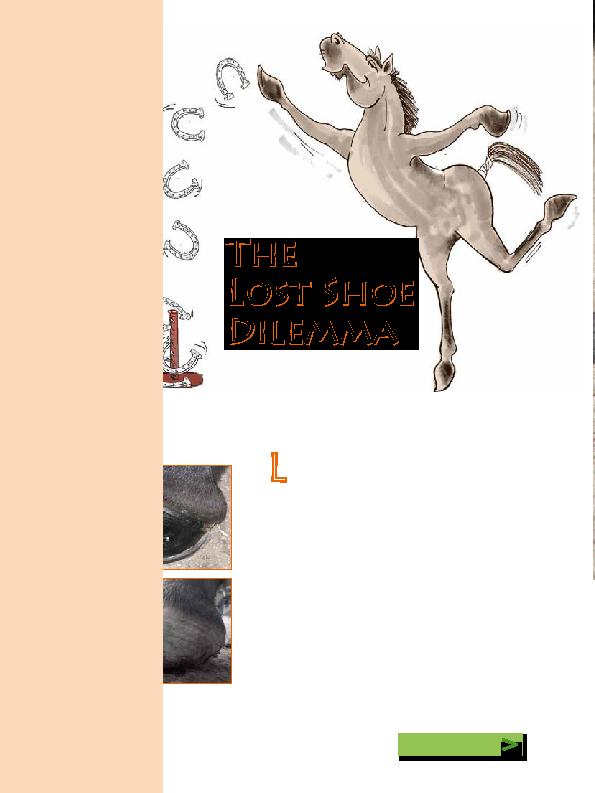
by Anthony Lawrence
Continued
Horses seem
to lose a shoe
at a time
that is most
inconvenient for
their owners;
generally
coinciding
with a lesson
booked that
afternoon; the
championship
for their sport
being the next
day or when
the farrier is
in Bavaria for
the next three
weeks.
Top: Full shoeing at the heels for long term
hoof health and comfort. These may be
caught by a hind if it over-reaches.
Above: Long toes delay breakover and
promotes over-reaching and lost shoes.
L
ost shoes are the bane of almost everyone's life
at one point or another in their career with horses.
Yet, if anyone has ever tried to remove a correctly
fitted horseshoe, they will know it is jolly difficult to
get the thing off without the correct tools and a bit of
strength and technique. So how do horses manage to
do this?
`Short Shoeing'
It is ironical that the practice of `short' shoeing
is one way to almost guarantee that shoes are not
likely to be lost during a reasonable length shoeing
cycle. Short shoeing means the farrier has selected
a shoe a size (or two or three) too small and fitted
them tight to the heels so that there is little chance
of the shoe being pulled off by the heel of the shoe
being caught either in wire or by the toe of a hind
hoof.
Yes, the shoes will probably stay on and a farrier
that uses this technique may even be favourably
regarded. Unfortunately, short shoeing is harmful
The
Lost Shoe
Dilemma
The
Lost Shoe
Dilemma
Illustration by Don Binks

